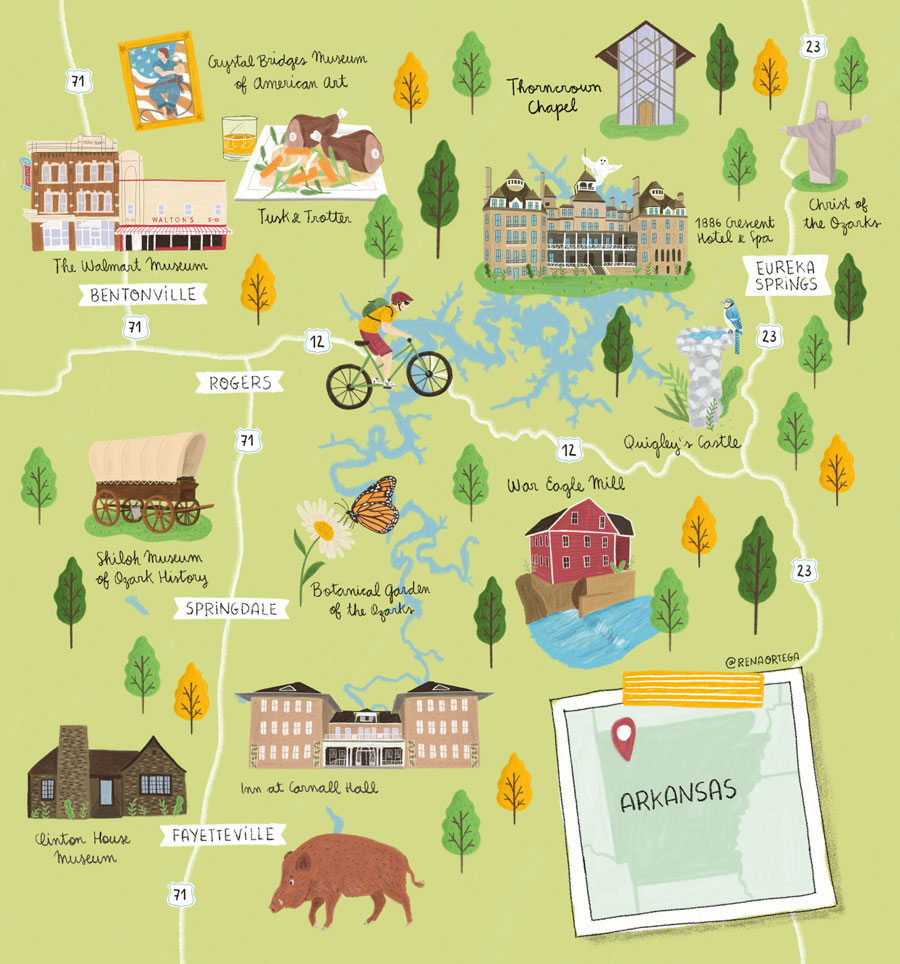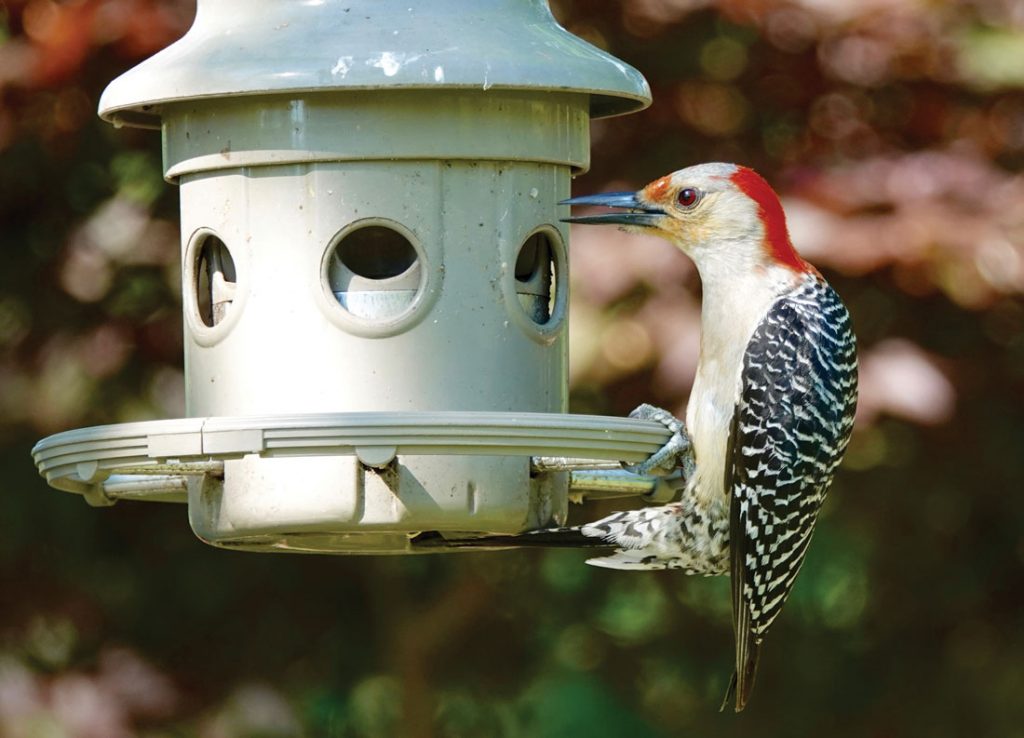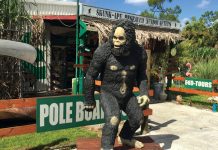
Map illustration by Rena Ortega
Travelers to the northwestern corner of Arkansas will encounter all the natural splendor—limestone cliffs, pristine lakes, deep forests—one would expect on a trip through the enchanting Ozarks. But surprises await in a trio of locales: a happening little city that was once home to one of America’s most storied power couples; a postcard-perfect town with national culinary and art cred; and a historic vacation destination renowned for its cliff-hugging Victorian houses and stone buildings.
Fayetteville
Home to the University of Arkansas, this lively town is the arts and entertainment hub of the region, especially around Dickson Street. The area is also a favorite destination of two-wheel enthusiasts of all stripes; it’s a jumping-off point for the Razorback Regional Greenway, the longest system of trails in the state. An excellent visitors center on the town square offers brochures for a range of interests, from beer to hiking, as well as local art and merch.

Photo courtesy of Inn at Carnall Hall
STAY
Inn at Carnall Hall | Built in 1905, the first women’s residence hall on the university’s campus today serves as a boutique hotel. Archival images of former students line the light-filled halls, wraparound porches offer an ideal setting for afternoon cocktails, and the adjacent lawn of Old Main (a grassy expanse fronting the oldest building on campus) beckons walkers.

Photo courtesy of Arkansas State Tourism
SEE
Clinton House Museum | This unassuming Tudor Revival bungalow just steps from campus enjoys an outsized place in American political history. Bill Clinton purchased the one-bedroom house in June 1975, and later that year, he and Hillary Rodham were married in the living room. Today, exhibits tell the story of the couple’s early years and nascent political life. Highlights include a reproduction of Hillary’s bridal gown and a garden containing the favorite flower of each First Lady.
SEE
Botanical Garden of the Ozarks | A collection of 12 themed gardens encircling a great lawn, this enchanting attraction is easily walkable. In addition to the dozen pocketed gardens—among them, rock and water, vegetable and herb, shade, and Japanese—visitors will discover a chatty chicken yard, a sculptural bat roost, and the state’s only butterfly house.

Photo courtesy of Arkansas State Tourism
DRIVE – 28 miles
Bid farewell to Fayetteville’s college verve and travel north along US-71B to Bentonville, stopping along the way to stroll the downtown streets of Springdale. Check out the murals, grab a taco at Don Guero, and pay a visit to the Shiloh Museum of the Ozarks for a full immersion in the history and culture of the region. (Visitors will also learn that the Ozarks aren’t mountains, but a series of plateaus carved away by erosion.)
Bentonville
There’s no escaping the irony: While Walmart may have played a role in the demise of scores of American downtowns, the company’s own hometown square stands triumphant, even resplendent. Couples walk dogs on the well-kept sidewalks, kids play in the tree-shaded square, neighbors catch up over ice cream. Visitors come to lay eyes on this living embodiment of Small Town U.S.A. They also come to view works at one of the nation’s leading arts institutions and dine at a bevy of acclaimed restaurants.

Photo courtesy of Michael Drager
SEE
The Walmart Museum | The five-and-dime Sam Walton opened on the town square in 1950 is today home to a museum showcasing the history of the world’s second-largest retailer. Check out the display of famous returns, including a “possessed” hand mixer and an outdoor thermometer that “never had the right time,” as well as Walton’s office, reassembled to look as it did when he died in 1992. Stop in at the museum’s Spark Cafe soda fountain for a 99-cent scoop of ice cream.

Photo courtesy of Stephen Ironside/Ironside Photography
SEE
Crystal Bridges Museum of American Art | Founded by Walmart founder Sam Walton’s daughter, Alice, and designed by acclaimed architect Moshe Safdie, this stunning museum invites visitors to travel through five centuries of works by American masters, including John James Audubon, Georgia O’Keeffe, and Andy Warhol—for free. Plan on lunch at the museum’s restaurant, Eleven, which appears to hover over spring-fed pools. Opt for the heirloom pinto beans with cornbread or the fried bologna panini.
Favorite pick | Stop in at Vanzant’s roadside market in Lowell to sample the heirloom Arkansas Black, a tart, crisp apple famous for its burgundy to ebony-red hue.

Photo courtesy of Visit Bentonville
EAT & DRINK
Tusk & Trotter | For a decade, this hopping gastropub just off the square has served upscale takes on regional dishes using Arkansas-sourced ingredients. Start with a pint of Bentonville Brewing’s Homewrecker IPA and an order of black garlic and truffle pork rinds. For the main event, go with the bone-in pork chop over pimento cheese purple rice or the buttermilk chicken breast with over-easy egg, carrot cake waffle, and sorghum syrup.
DRIVE – 46 miles
From Bentonville, head into the forests surrounding 28,000-acre Beaver Lake on twisting Scenic Highway 12, a favorite of motorcyclists. Make a short detour to War Eagle Mill, the state’s only working grist mill and one of the most popular breakfast and lunch joints in the Ozarks. Continue to Eureka Springs along Arkansas Highway 23, stopping at = just a few miles outside town. Dubbed the “Ozarks’ Strangest Dwelling,” the dream home of nature enthusiast Elise Quigley (1910–1984) showcases her extraordinary collections of fossils, arrowheads, shells, stones, and even butterflies.
SAVE THE DATE
Proof positive that Bentonville doesn’t take its culinary scene too seriously: On September 25, the tenth annual World Champion Squirrel Cookoff welcomes imaginative cooks and adventurous eaters to a celebration of dishes, from gumbo to sausage, featuring “tree bacon.”
Eureka Springs
In the 1880s, word spread of the healing waters that poured from some 60 springs in the area. Thus a humble village was transformed into a booming resort town and christened Eureka (a Greek expression meaning “I found it!”). Today, visitors flock to the relatively isolated mountain town to admire the historic buildings—colorful Victorian homes, and hotels and stores constructed of local limestone—anchored on hillsides and rising out of hollows. Outdoor adventures abound, from fishing and hiking to mountain biking.

Photo courtesy of 1886 Crescent Hotel & Spa
STAY
1886 Crescent Hotel & Spa | Billed as the most haunted hotel in America (with 16 named ghosts), this property began in 1886 as one of the nation’s most luxurious resorts, followed by stints as a women’s college and a hospital. Guests at the quirky 72-room hotel may sign on for the popular ghost tour (be sure to book early), as well as hatchet throwing, target shooting, and lawn games.
SEE
Thorncrown Chapel | This little chapel in the woods is arguably the most celebrated piece of architecture in Arkansas, having won a host of awards and been named to the American Institute of Architects list of best buildings of the 20th century. Built almost entirely of indigenous materials, the light-filled prism features 425 windows and more than 6,000 square feet of glass. It’s open daily and hosts two services on Sunday mornings.

Photo courtesy of Whit Slemmons
SEE
Christ of the Ozarks | Erected in 1966, this seven-story statue of Jesus is the second largest in the world (outstripped only by Christ the Redeemer in Rio de Janeiro). It’s a place of pilgrimage as well as the site of one of the most popular passion plays in the world; more than 8 million have visited since 1968.
PARK IT
Upon arriving in Eureka Springs, ditch your car in favor of the town’s trolley system, and leave the navigation of the notoriously narrow, winding streets to the experts.
This article appears in the Fall/Winter 2021 issue of Southbound.











![The North Carolina Museum of Natural Sciences’ newest exhibit is a [pre]historic first](https://cdn2.atlantamagazine.com/wp-content/uploads/sites/4/2024/04/DD-3-100x70.jpg)



